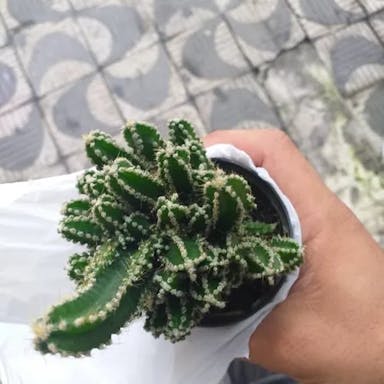Barbed-wire cactus, scientifically known as Acanthocereus tetragonus, is a unique plant with distinct characteristics. It is a member of the Cactaceae family and is native to the tropical and subtropical regions of the Americas. This cactus is commonly found in Mexico, the Caribbean, and parts of South America. Acanthocereus tetragonus is known for its long, slender stems that resemble barbed wire, hence its common name. The spines serve as a defense mechanism against herbivores. These flowers eventually give way to small, edible fruits that are red or purple in color. These fruits are often enjoyed by birds and other wildlife. This cactus is relatively easy to grow and is well-suited for arid and semi-arid environments. It prefers well-draining soil and requires minimal watering. Acanthocereus tetragonus can be propagated through stem cuttings, making it a popular choice for cactus enthusiasts. In conclusion, Acanthocereus tetragonus, or the Barbed-wire cactus, is a fascinating plant with its unique appearance, fragrant flowers, and edible fruits. It is a resilient and low-maintenance plant that adds beauty to arid landscapes.
0
0











